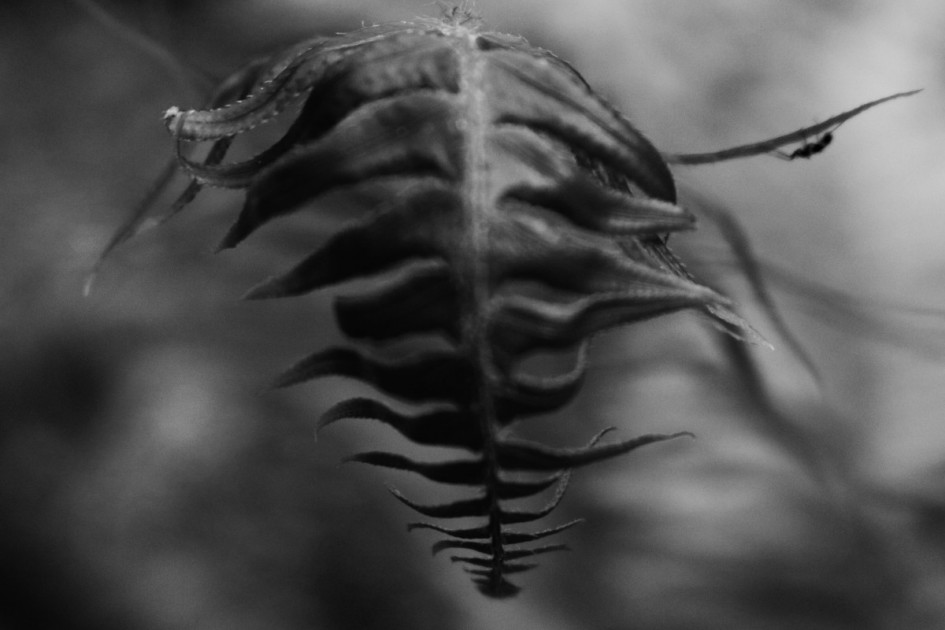Our Research
Fern Spore Ejection
Gabbi K., James L., Nicholas D.
Abstract:
Ferns are a vastly eclectic species of beauty and reverence. Ferns are seedless vascular plants that propagate their species with spores at impressively high speeds. The sori and the ferns gametophyte, once matured, are activated by heat and ejected with a catapult-like mechanism. Filming with a high speed camera , data was acquired and analyzed to produced valuable information concerning the velocity at which the spores are ejected. We found accelerations ranging from -.0048 to .004 m/s/s.
Background:
The reproduction of ferns is an amazing process. Spores are launched from adult ferns at outstanding speeds, some have been recorded at more than 2 m/s (Vogel, 2005). Ferns have a unique potential to propagate the far off distances of Earth’s vast terrain, via the wind. By drifting their haploid vessels on the gentle zephyrs that deliver a perfected life force to their final destination. The clade of ferns has evolved to populate the planet with over 12,000 known species [3] ( Read, Cladograms make life clado-grand! to learn how researchers have developed cladograms). The curiosity arises within the contemplation of the sporangium mechanism. The idea is to understand the power behind these tiny catapult-like structures.
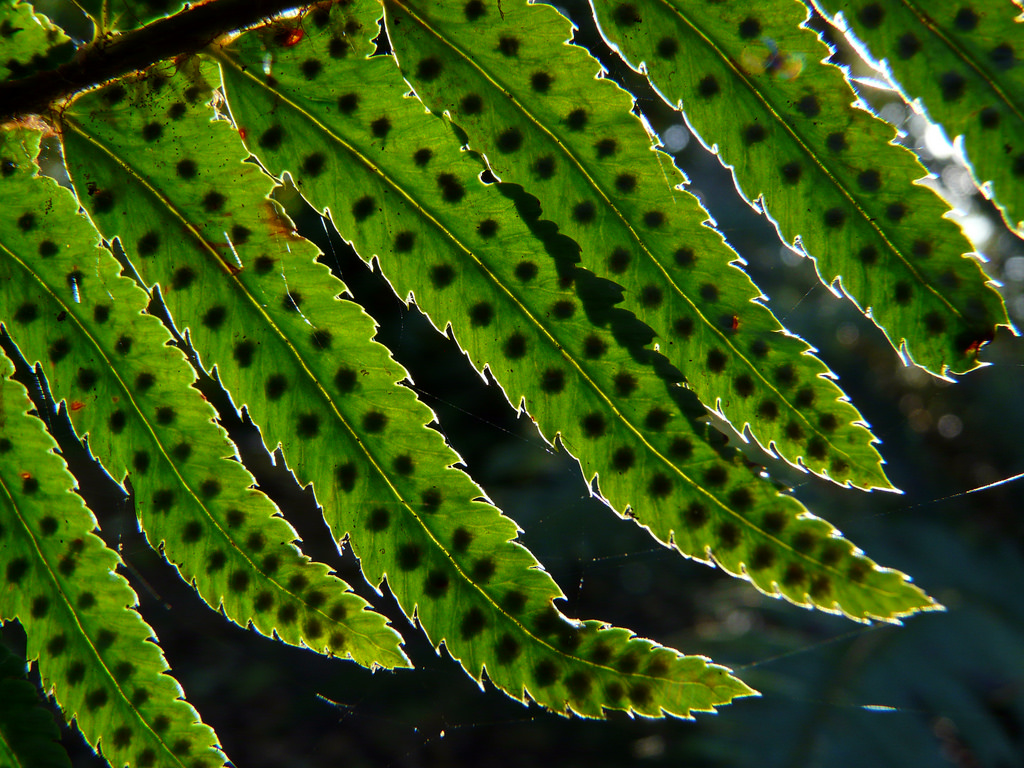
Sword Fern Sori, Nick Denk, 2016
We chose to research fern spores because we wanted to understand more about the native flora outside our backdoor (Check out The In(gene)ious Way of Indexing Life to learn a new technique for identifying ferns out your back door!). Ferns are one of the most prevalent fixtures in the forests of Washington State and can be found in almost every area of the region [8]. Our project brought us greater understanding for the reproductive process used by these incredible plants that grow all around us (For a deeper understanding of the incredible properties of ferns, read Yearn for the Fern). In our project we researched the acceleration with which fern spores are ejected and the various distances the spores reach at initial ejection under negligible wind conditions. To analyze our findings, we measured the ejection of spores with a high speed camera in a video analysis.
We ultimately found successful, and usable data after many failed trial tests. One of the first things that we noticed was that this late in the season, many of the ferns had already ejected their spores. This coincided with the fact that this year, spring came early, and the dry heat was set upon the ferns, which triggered their reproductive tendency. We were able to overcome this by locating some ferns that were kept specially in The Evergreen State College greenhouse, which we were graciously allowed to use. The
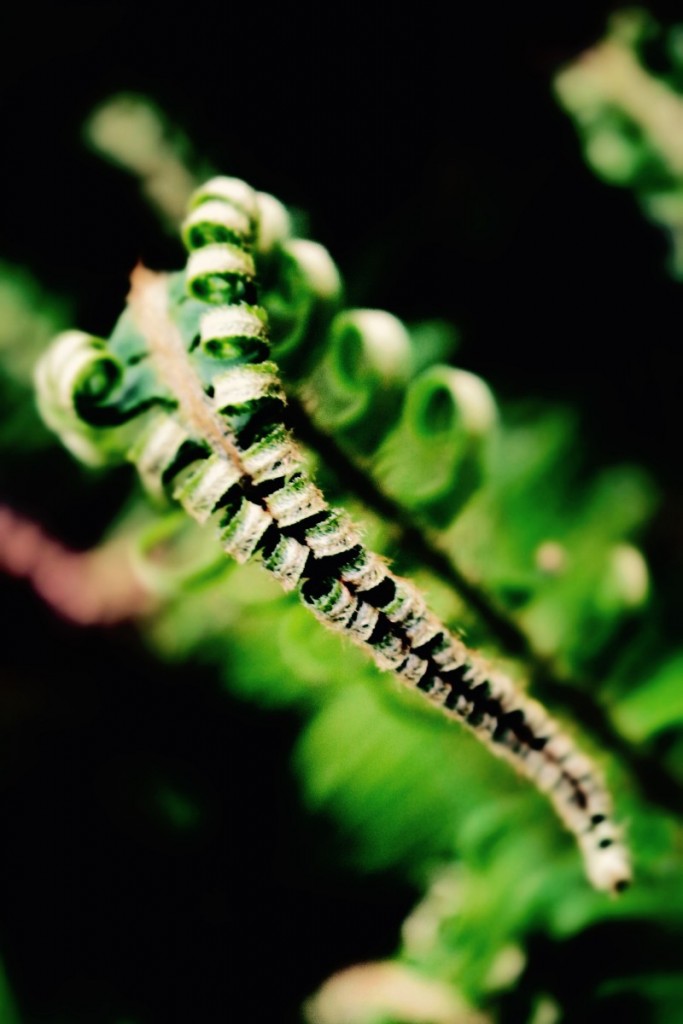
Nick Denk, 2016
next hurdle that we came across was with our equipment. The cameras we used were unable to focus, and the videos did not having high enough frames per second. Finally, after getting the equipment working, the apparatus set up, and started collecting data, we had a video product. The videos we were able to gather however, was useless in terms of data collection. The fern spores flew straight at the camera, and therefore the velocity could not be accurately measured.
After setting up multiple angles and getting creative about filming this reproductive process, we were finally had a high speed movie we could analyze. This project was not without its share of projectile dysfunction…
Methods:
For our project, we had originally planned to collect wild ferns for data. We soon found that none of the native fern sori were viable at this point in late spring. Instead we collected multiple samples of Woodwardia areolata ferns from The Evergreen State College’s greenhouse. We cut the samples into squares containing three to four sori, which were examined under a microscope to ensure they have yet to eject. Since fern spores eject when heated and dehydrated, we needed a heat source. We also needed a high volume of light in order to capture high speed video. We chose to use a 450 watt halogen work light, it competently fulfilled both of these tasks.
We then attempted to film the fern sori from an overhead angle. We faced many technical difficulties and tried various cameras with high speed setting, ranging from 240 to 1200 fps. We struggled to obtain a quality image and adequate focal range. We finally found two recording techniques that proved fruitful.
In the first productive setup, we attached an iPhone 5 camera to a ring stand. We then positioned the camera on the stand, so that it looked down the barrel of a dissecting microscope. The fern sample was set on the stage on the microscope and the halogen light was turned on. Using the slow-motion setting (240 fps) we were able to capture ejection. Although it turned out to be un-analyzable, 240 fps was too slow to capture the speedy spores, it produced a clear, exciting shot.
In the second successful setup, we took a Nikon 1 J2 high speed camera and positioned it on a tripod, angled to look through the lens of a dissecting microscope. The Nikon 1 J2 was able to capture 1200 fps, which got us much closer to the speed of ejecting spores, although the picture was not high quality. Unfortunately, due to the situational and technological limitations, the video we obtained was inadequate for analysis. In an attempt to get a side view of the spores ejecting, we cut black cardstock into a sandwich board-style setup. The fern sample was taped onto the cardstock, setting the sori facing outward on a horizontal axis. This was then placed under a dissecting microscope and the Nikon camera was setup, again looking through the eyepiece of a dissecting microscope, to capture the ejection.
Analysis:
Our research has culminated in graphs of position vs. time and velocity vs. time. We also captured high speed video of fern spore ejection from several different angles. This data is helpful in inferring whether or not global warming will have an effect on the fern spore ejections using current warming trends. Already we were able to see the effects that an unusually warm summer had of the wild fern population. The evolutionary aspects of existence will be tested in the upcoming years and the intention is to stay ahead of the curve, to decipher the patterns of plant propagation and to activate the knowledge within. What aspects of these ancient beings will compete with the surrounding life as the warmth engulfs the planet? How will this knowledge affect the future? After all, science is the art of prediction.
From our video analysis we derived a graph of position of the ejected spores in relation to the time passed. The position curves came out to be fairly predictable, with a positive trend. The first graph, Y(m) shows a negative trend developing right off the bat, and we believe that the this is because the spore that was ejected had external factors linked to it that would have skewed its trajectory if it had been launched in perfect conditions (i.e. no wind). From the position vs. time graphs of the two spores, we were able to calculate a velocity vs. time graph. Using this graph we were able to show the specific speed(s) of the spores at set points in time. Both graphs show a general decrease in the speeds over time, which can be well explained by the concept of friction, which is one of the greatest forces acting against the object (as defined by Newton’s second law which states that the spore would keep going forever without this counteracting force).
The acceleration of each spore can be found using the slope of the trend line for each of the velocity vs. time graphs. The acceleration for the x velocity graph is -.0048m/s/s, while for the y velocity graph the acceleration is .004m/s/s. Oddly enough, the y velocity graph had a positive acceleration overall, which is indicative of the fact that, since the video was a bird’s eye view of the action, it could have been the force of gravity that caused further acceleration as the spore arched downward.
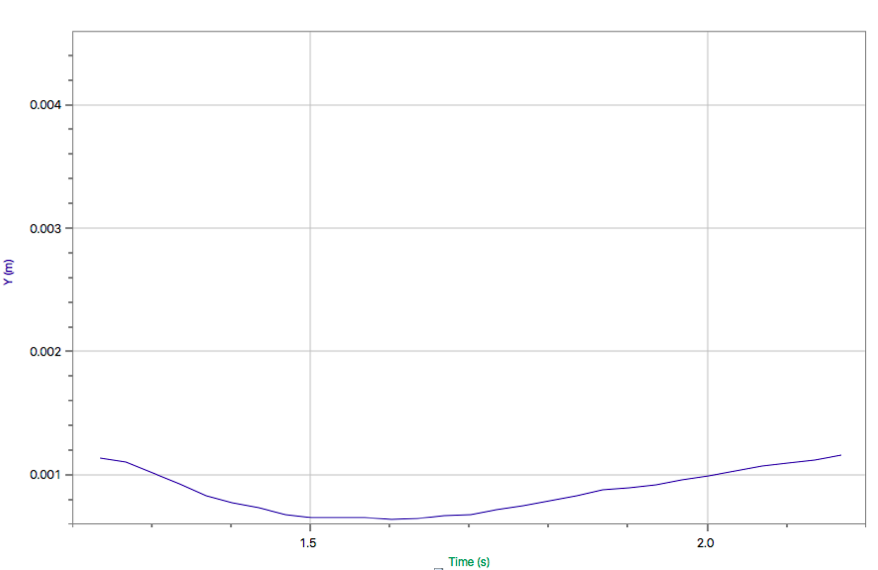
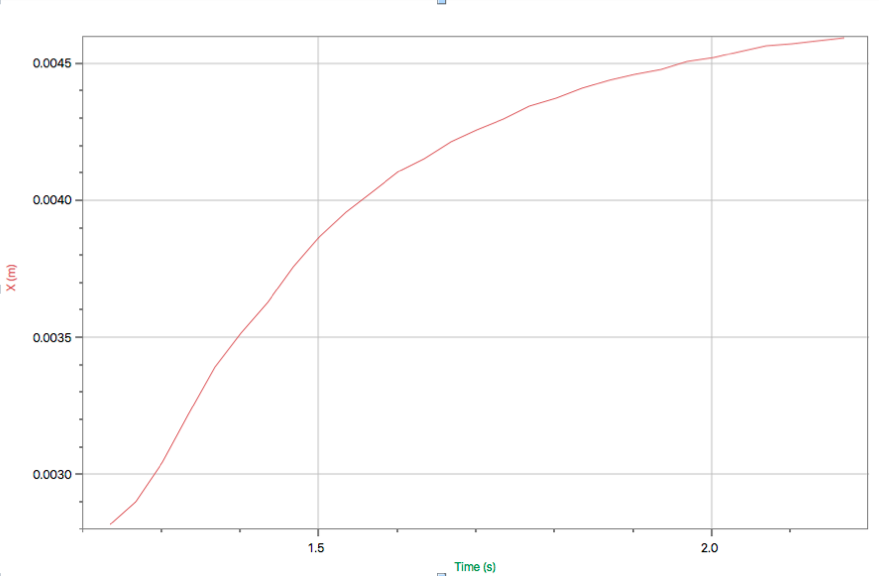
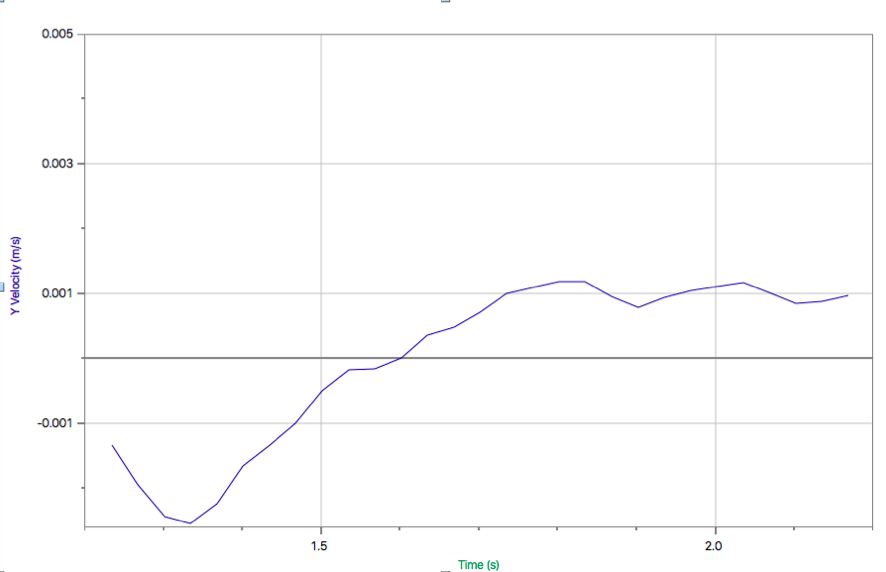
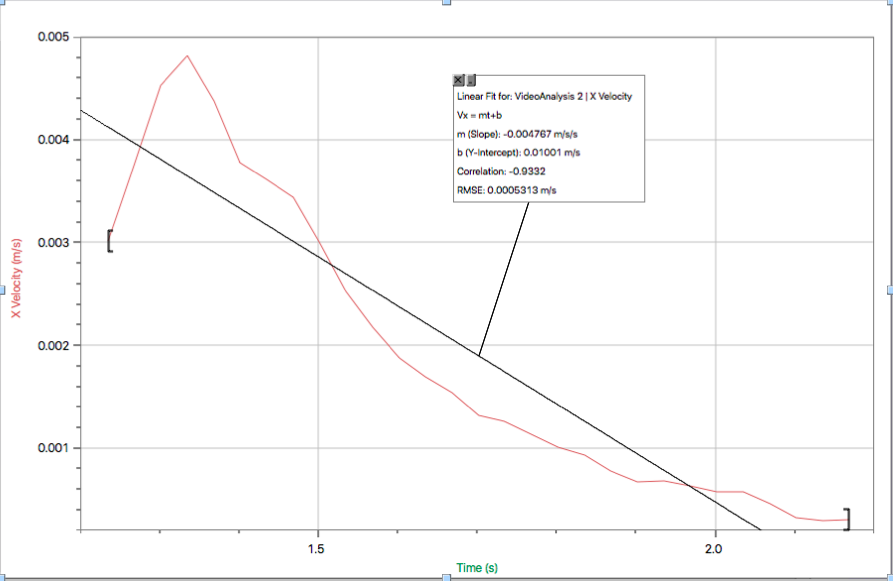
Bibliography:
- M. Hesse, F. Ehrendorfer Morphology Development, and systematic relevance of pollen and spores. International Botanical Congress 14th edition. (1987)
- Peter H. Hovenkamp , Raymond W. J. M. Van Der Ham , Gerda A. Van Uffelen , Martin Van Hecke, Joshua A. Dijksman & Wim Star (2009) Spore movement driven by the spore wall in an eusporangiate fern, Grana, 48:2, 122-127, DOI: 10.1080/00173130902804331
- Poppinga S, Haushahn T, Warnke M, Masselter T, Speck T (2015) Sporangium Exposure and Spore Release in the Peruvian Maidenhair Fern (Adiantum peruvianum, Pteridaceae). PLoS ONE 10(10): e0138495. doi:10.1371/journal.pone.0138495
- X. Noblin, N. O. Rojas, J. Westbrook, C. Llornes, M. Argentina, J. Dumais The fern sporangium: a unique catapult. Science. 335. DOI: 10.1126/science.1215985 (2012) <http://science.sciencemag.org/content/335/6074/1322>.
- J Lacey spore dispersal – its role in ecology and disease: the British contribution to fungal aerobiology. Centenary Review. Vol. 100 pages 641-660. (1996) <http://ac.els-cdn.com/S0953756296801948/1-s2.0-S0953756296801948-main.pdf?_tid=c499db88-1bb7-11e6-b42d-00000aacb35f&acdnat=1463438857_fc67c6ebdf28a08c3dc230f38d86b97e>.
- P. G. Wolf, H. Schneider, T. A. Ranker Geographic distributions of homosporous ferns: does dispersal obscure evidence of vicariance?. Journal of Biogeography. Volume 28, Issue 2, pages 263–270. (2002) <http://onlinelibrary.wiley.com/wol1/doi/10.1046/j.1365-2699.2001.00531.x/full>.
- D. S. Barrington Ecological and historical factors in fern biogeography. Journal of biogeography. Volume 20, issue 3, pages 275-279. DOI: 10.2307/2845635 (1993) <http://www.jstor.org/stable/2845635?seq=1#page_scan_tab_contents>
- http://portlandnursery.com/service/privacypolicy.shtml
